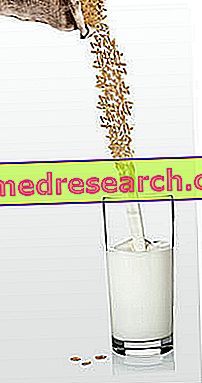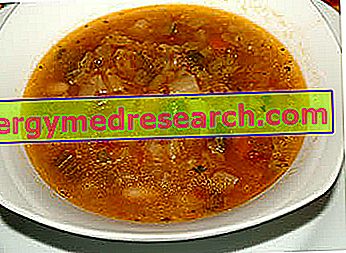Introduction
Rice milk is a drink with an appearance similar to cow's milk, obtained industrially by macerating the grains of the cereal of the same name in a broth of water, then adding enzymes and pressing the whole;

Properties of rice milk
The main advantage of rice milk is the absence of lactose, which makes it suitable also for people who are intolerant to this sugar; there are also no cow's milk proteins, to which some individuals, including infants, develop hypersensitivity. The formulas for infants are however made up of rice hydrolysates, that is, products in which the protein fraction of the food is reduced to simpler molecules to further break down the antigenic potential, that is the ability to trigger allergic reactions.
Unfortunately, in addition to lactose, in rice milk there is the absence, or in any case the lack, of some precious nutrients contained within the cow's milk. Vitamin B12 and vitamin D, for example, are missing, while calcium concentrations are significantly lower, as is the protein content and its biological value. Not surprisingly, formulas for infants are deeply adapted so as to trace the composition of breast milk; for example, the addition of taurine, carnitine and essential amino acids such as lysine is expected.
In rice milk the simple sugars derived from the spontaneous hydrolysis of starch, which together with the other characteristics, make it an easy digestion energy drink abound. The lipid fraction is in fact modest and unlike that of cow's milk, it is cholesterol-free, very poor in saturated fats and rich in polyunsaturated fatty acids.
Rice milk: potential indications
Vegan food styleLactose intolerance
Allergy to milk proteins
Soy protein allergy
Need to moderate the dietary intake of saturated fatty acids and cholesterol
Low protein diets (eg due to kidney problems)
Rice milk: potential contraindications
Rice milk may be contraindicated in the presence of diabetes or reduced glucose tolerance. It contains important amounts of simple sugars, digested and absorbed rapidly in the intestine, with a consequent rise in blood sugar. For the same reason, rice milk should be consumed in moderation by obese or overweight people. Finally it should be remembered that non-enriched rice milks are poor in calcium, vitamin A, D and B12 and proteins, all important nutrients for the growth of children, but also during pregnancy, lactation and old age.The pleasant taste of rice milk (given by the richness in simple sugars), together with the low allergenicity, the absence of cholesterol, gluten and saturated fatty acids, the lower environmental impact and plant origin so dear to vegans, is making us collect to the product a moderate commercial success.
The consumer should choose products made from brown rice, preferably organic, and enriched with nutrients such as calcium, vitamin D and vitamin B12. These days, the problem of the not-so-low cost of the drink, which affects the family budget but can be bypassed by producing rice milk in one's own home, must also be considered. The recipes in this sense are numerous, but all based on the use of rice (better if integral), water and sometimes starch, sea salt and vanilla. The simplest recipes involve cooking rice for about an hour in two parts of water (a cup of rice in two cups of water); the flame will be quite alive until the onset of boiling, after which it will be kept to its minimum values. The contents of the pot should therefore be left to rest under the same conditions, under a lid, for about an hour, without mixing. The cooking will be completed when the rice has absorbed all the water; at this point it is sufficient to take a punch (four tablespoons of rice) and place it in a blender together with a liter of water; before consumption, the rice milk thus obtained will obviously be filtered with a sieve or better still with a gauze. At the discretion of the consumer there remains the addition, to rice milk, of aromas, such as vanilla, cinnamon, cocoa and sea salt.
Homemade Rice Milk - Alice's Video Recipes
Homemade Rice Milk - Video Recipe
X Problems with video playback? Reload from YouTube Go to Video Page Go to Video Recipes Section Watch the video on youtube



